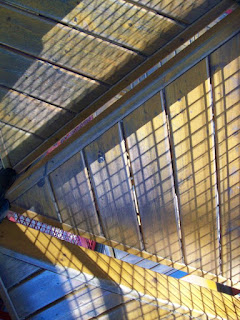 |
| I read chapters 7,8,and 9 from Crafting Writers, k-6 by Elizabeth Hale. Writing about the cafeteria is a good topic because everyone can use their five senses! |
Last week, some of us preservice teachers worried about our ability to teach writing if we felt insecure about our own skills. Hale uses the swimming lesson in chapter 7 to point out that a person doesn't have to be an expert on something in order to teach. What matters is if the people on the receiving end of our instruction are actually learning. To build confidence as a future writing teaching, I will make the effort to journal more and read The Elements of Style.
Even if I'm qualified to teach, are my students learning? The stimulation children are receiving today challenges me to prepare lessons that are attention-grabbing and retainable. Hale recommends using 7-10 minutes to teach just one skill, dubbing this a "mini-lesson". Categories include craft, mechanics, writing strategy, and text features. The time I spend with my students is precious, so I must make sure that whatever I teach is applicable and specific. Hale asks two questions before starting a lesson:
What exactly am I teaching?
Why am I teaching this? How will it help my students as writers?
Last week, I mentioned how reading good literature will model good writing. I should also point out the necessity in using a book that the students have already read. This way, they are focused on picking up how the story is written rather than what takes place in the plot.
Another example would be to use a student's piece. As a child, I paid attention when a classmate's writing was being shared since I wanted to know what made Susie Q a "good writer." With mini-lessons, Hale is looking for the student who did a good job in using the specific craft, giving many kids a chance to have their work up on the overhead.
In live writing, the teacher has a chance to demonstrate how she tackles the process in front of students. Although I found it cheesy at first to make the hmmmmmm? noise, children hear and see you doing that, they see that you are thinking when you write. Perhaps kids had the misconception that adults are automatic word processors who can spill out lettters on the paper or keyboard. When the teacher before a live audience, she shows that writing is something that requires effort and thought for its creation.












